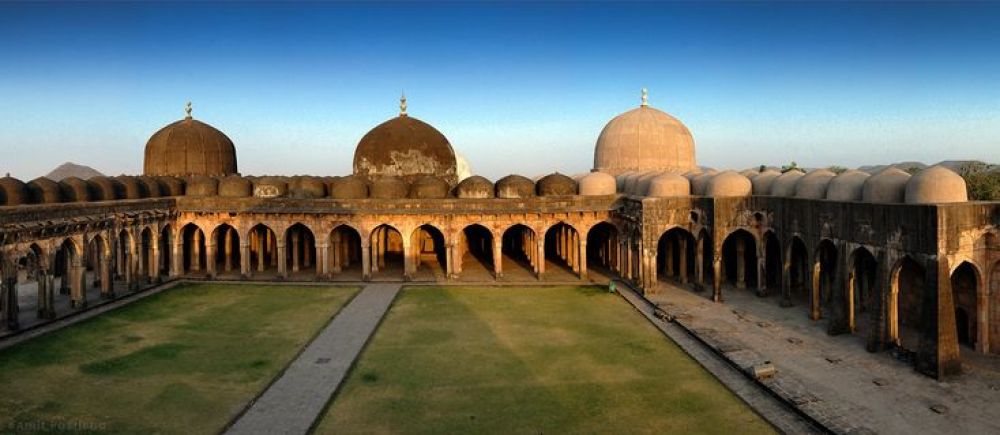

Nestled in the historic city of Mandu in Madhya Pradesh, the Jami Masjid stands as a testament to the architectural prowess of the region's erstwhile rulers. This grand mosque was commissioned by Hoshang Shah, but it was completed by Mahmud Khilji in the 15th century. It was designed as a tribute to the great mosque of Damascus, reflecting the influence of Islamic architecture. Its significance in Islamic history and impressive structural design have made Jami Masjid a pivotal site in the history of tourism in Mandu. Visiting this magnificent site is akin to a journey back in time to the era of the Ghurid dynasty and the rule of sultans over central India.
The architecture of Jami Masjid reflects the confluence of Afghan and Mughal styles, boasting of a large courtyard, grand domes, and intricate marble lattice work. The mosque is built on a large plateau and surrounded by pristine landscapes, which only adds to its majestic aura. Over the years, it has attracted not just those of the Islamic faith, but also historians, architects, photographers, and tourists from all over the world, who come to marvel at its beauty and historical importance.
Mandu has long been appreciated for its rich history and enchanting ruins. Tourism began to flourish here with the recognition of its distinct array of monuments, each narrating a tale of its own. The city's great wall, palaces, tombs, and mosques echo with legends of love and valor, most famous of which is the romantic tale of Baz Bahadur and Rani Roopmati. Government and local efforts to preserve Mandu's monuments have retained its charm and historical significance, thus continuously attracting tourists.
With the advent of technology, digital platforms have transformed the way tourists experience Mandu. Today, numerous websites offer virtual tours and extensive historical insights into sites like the Jami Masjid. Moreover, trends such as sustainable tourism and immersive cultural experiences are shaping the future of tourism in Mandu. There is an increasing focus on preserving the natural habitat and promoting local culture and crafts. Events like the annual Mandu Festival showcase local arts, crafts, and cuisines, combining heritage with adventure and nature activities. These endeavors not only enrich the tourist experience but also foster a deeper appreciation for Mandu's cultural and historical legacy.
Visitors to Jami Masjid can engage in guided tours, which offer insights into its fascinating history and architectural details. The mosque’s grandeur is best appreciated at dawn or dusk when the soft sunrays paint the red sandstone in hues of gold—an experience not to be missed. In addition to this, the cool climate during the monsoon season turns Mandu into a verdant paradise, thereby making it an ideal time for tourists to explore the architectural wonders and scenic beauty of the region.